






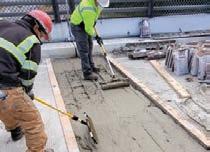









































With 2023 underway, the holiday season is now behind us. I hope everyone was able to celebrate the season and enjoy time with family and friends. Now we are into the time of year where many members are hoping to see snow in the forecast so that plows can get out on the road, while others are hoping to find a little time to escape the snow and head to points south. For UCANE, January means the continuation of the momentum we had in the past year, and looking forward to a busier 2023.
Massachusetts now has a new Governor and Administration for the first time in eight years. UCANE is fortunate to have established realtionships with Governor Maura Healey and Lieutenant Governor Kim Driscoll, having worked with them in their prior roles as Attorney General and Mayor of Salem, respectively. But the Administration goes well beyond the Governor and LG, as there will be several new agency and department heads and staffers. This includes MassDEP, where longtime UCANE friend and MassDEP CFO Steve McCurdy has retired, and also moving on is Commissioner Marty Suuberg, who has been a great partner to us, and always responsive to our concerns. On behalf of UCANE, I’d like to thank them both and wish them well in their future endeavors.
There will also be significant turnover in the State Legislature. While leadership remains the same, there are several new House and Senate members and Committee Chairs that will be appointed. While all this transition creates a lot of work, it also presents a tremendous opportunity to foster more partnerships and advocates for our industry. We have the chance to introduce UCANE to them and let them know about our priorities and the critical utility infrastructure work our members do, and hopefully they will become advocates for our priorities.
This month is also the beginning of a new two-year legislative session on Beacon Hill. UCANE once again will file legislation on behalf of our industry. Our legislative priorites this year include a dedicated funding mechanism for water infrastructure through a connection fee, payment and availability of police details, workforce development, and MBE/ WBE issues. Approximately 8,000 proposals in total will be filed this session, and UCANE will be sure to keep an eye out for any proposal that may negatively affect our industry and our businesses.
MassDEP also recently released its draft Intended Use Plan (IUP), which is a preliminary list of approved water infrastructure projects using funds financed through the Clean
Water Trust. While this is a draft list, highlights include $878 million for 59 new Clean Water construction projects and approximately $300 million is being offered to finance 38 new Drinking Water construction projects. Overall, approximately $1.278 billion has been authorized for new, multi-year, and planning projects. This is the second year of a large increase in authorized spending, which reflects the multi-year impact from the federal infrastructure law (BIL) and stimulus funds (ARPA). (Draft lists can be found beginning on page 25.)
Along with the additional project authorization, there is also significant funding available for communities to qualify for principal forgiveness and grants, something UCANE has strongly advocated for as an incentive for municipalities to apply and approve these critical projects. I would like to thank MassDEP for getting this list out two months earlier than last year, which should significantly help municipalities and awarding authorities with their planning! While this is welcome news, UCANE will continue to work with MassDEP and other stakeholders to ensure the maximum number of projects are approved and put out to bid as soon as possible. As I’ve stated before, our number one priority is to avoid delays in project approvals caused by supply chain and inflationary issues.

UCANE will once again be offering safety seminars on confined space/competent person and asbestos cement pipe certification this year. Be on the lookout for emails with the exact dates and locations. I encourage members to take advantage of these classes. Any employee handling an asbestos pipe MUST be certified every five years. Also, if there is a class or training that you would like to see UCANE offer, please contact the office.
So 2023 is off to a fast start. Since the Patriots will not be involved in any chase for a Super Bowl this year, being busy can make the long winter days pass by a little more quickly. But rest assured that no matter what time of year it is, UCANE will continue to actively advocate on behalf of our industry. n


After a productive 2021-2022 legislative session, the Massachusetts legislature reconvened for its 193rd session, which spans the next two years. As the new Democratic Governor Maura Healey and Lt. Governor Kim Driscoll begin to get comfortable in the State House’s corner office, the new legislative session will have a decidedly different feel from the previous eight years. No longer able to chalk up policy differences to “Republican v. Democrat,” legislative leaders will be presented with a scenario similar to the early days of when former Democratic Governor Deval Patrick assumed the reins of the executive branch. Add to that the Massachusetts legislature has sworn in at least 25 new members this year and, including last session’s new class, has over 20% new members overall, it should present an interesting policy session.
To that end, as House Speaker Ron Mariano and Senate President Karen Spilka lead their respective branches into the new session, there are a variety of policy matters that may lead the conversation. In particular, expect the Massachusetts legislature to look at some of the following issues:

• Tax Relief/Tax Reform. The impact of Mass. Gen. Laws ch. 62F derailed the legislature’s attempt at tax reform during the previous session. Look for reforms to the estate tax, childcare tax credit, and a host of other tax relief initiatives to be front and center. As the Commonwealth’s revenues continue to grow and the potential for continued growth due to passage of the so-called millionaire's tax, there is increased pressure on the legislature to provide tax relief. With tax relief on the radar, expect any such discussion to include tax reform, primarily around Mass. Gen. Laws ch. 62F, which many legislators felt handcuffed any potential tax relief efforts in the last session.
• FY24 Budget. Notwithstanding the aforementioned issue of tax relief/tax reform, the budget process is always something to watch. This year will be G overnor Healey’s first budget proposal so expect to see her priorities outlined in a little more depth. While campaigning against an opponent who relied on very broad policy strokes, Governor Healey was able to stick to broader themes as well. H er Administration’s first budget, due in March, will provide some insight into how she will achieve her stated policy goals. There is a strong c hance that the F Y24 budget and tax relief/tax reform efforts occur at the same time.
• Transportation/Governance. Before the COVID p andemic c hanged t he topic, B eacon H ill was abuzz with efforts to implement transportation reform on a number of fronts. The MBTA, which was a focal point throughout the campaign s eason, is targeted for governance and finance r eform. A s well, s ome municipalities have been making it known that they would like to revisit the road and bridge funding formula contained in Mass. Gen. Laws ch. 90. Expect the legis lature to entertain a variety of policy proposals aimed at the state’s transportation system.
• Health Care Reform. The Massachusetts legislature p assed s ignificant o mnibus m ental health legislation last session, but left a number of other health care reforms on the table. While the Senate passed prescription drug reform, the House did not. While the House passed hospital consolidation legislation, the Senate did not. With health care costs continuing to increase, expect the legislature to revisit health care reform efforts.





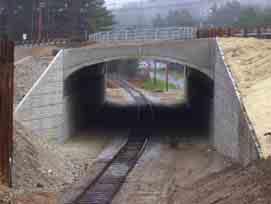








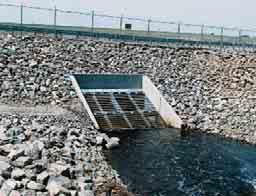
Legislative Update continued from page 7
• Housing/Environmental Bond Bills. While the legislature tends to pass a variety of bond initiatives, the timing seems to favor an effort to reauthorize the housing and environmental bond bills. These measures, which often involve significant bonding authority, contain extensive policy initiatives as well. The identified policy initiatives set the path for the next three to five years of activity in a targeted area. Rising housing costs and infrastructure needed to support the spate of recently passed environmental initiatives should keep these two measures on the legislative radar.
In terms of a timeline, the 2023-2024 legislative session’s bill filing deadline is Friday, January 20th. Leadership appointments will likely be made in late January to mid-February. Legislation will then be assigned to the respective committees by the end of February to mid-March with the Gov-
ernor’s budget due in early March. The House will consider its budget proposal in April while the Senate does the same for its proposal in May. Final budget deliberations will likely lead to a budget for Governor Healey to act on before July 1 Stay tuned for additional
in Construction Outlook
continued on page 11



With the Healey-Driscoll Administration in charge of the executive branch, the first order of business was to appoint key personnel to leadership positions within, and around, the Governor’s Office. As reported by various media outlets, the Healey-Driscoll Administration has initially looked at individuals who have served either in Healey’s Attorney General office, the Patrick-Murray Administration, or the Baker-Polito Administration as well as those with municipal experience. Of particular note, December saw the new administration make the following announcements:
• Chief of Staff. Leading the Governor’s Office will be new Chief of Staff Kate Cook. A graduate of Harvard University and Brown University, Ms. Cook previously worked for seven years at Sugarman Rogers, chairing its government law and election law practice groups. Previously within the Patrick Administration, she worked as Chief Legal Counsel. Prior to that she was the General Counsel to the Senate Ways and Means Committee and Assistant Corporation Counsel to the City of Boston.
• Chief Legal Counsel. Ms. Paige Scott Reed, who previously served as General Counsel to both the Massachusetts Department of Transportation, the MBTA, and Boston 2024 was named the Governor’s Chief Legal Counsel. Currently a partner at Prince Lobel Tye LLP, Ms. Scott Reed earned a degree from Harvard College in 1992 and graduated cum laude from Harvard Law School in 1997. She is a past president of the Massachusetts Black Lawyers Association.
• Secretary of Executive Office of Administration and Finance (ANF). Mr. Matt Gorzkowicz was named the Governor's chief budget operative as Secretary of the ANF. Mr. Gorkowicz worked for more than a decade at UMass as the Associate Vice President for Administration and Finance. He previously worked as Budget Director in the Senate Ways and Means Committee, Chief Financial Officer at the Massachusetts School Building Authority, and as Assistant Secretary for Budget at the ANF before. He is a graduate of Northeastern University
• Secretary of Massachusetts Department of Transportation (MassDOT). Ms. Gina Fiandaca, the former Commissioner of the Boston Transportation Department, was named the new Secretary of Mass-














































































DOT. Most recently, Ms. Fiandaca was the Assistant City Manager for the City of Austin, Texas. She received an MBA from Boston University and a bachelor’s degree from Suffolk University. To serve as Undersecretary of MassDOT, Governor Healey appointed Ms. Monica Tibbits-Nutt, the current Executive Director of 128 Business Council, a transportation management association and regional service provider that plans and executes innovative first-/last-mile service throughout the Route 128 West Corridor. She recently completed her tenure on the MassDOT Board of Directors and as Vice-Chair of the Fiscal Management and Control Board that oversaw the MBTA from 20152021. She received a Masters from the Ohio State University in Columbus and a Bachelor of Science
in Political Science and Sociology from the University of Southern Indiana.





• Secretary of the Executive Office of Energy and Environmental Affairs (EEA). Ms. Rebecca Tepper serves as Attorney General Healey’s chief advisor on energy and environmental policy as Secretary for EEA. She’s responsible for the office’s three environmental and energy divisions, including executing the statutory duties of the Commonwealth’s ratepayer advocate. She worked in the Attorney General’s Office since 2015, and previously served as General Counsel for the Massachusetts Department of Public Utilities and Director of the Massachusetts Energy Facilities Siting Board. Before entering state government in 2009, Tepper worked in the private sector for 15 years as a Partner at Rubin and Rudman LLP. She is a graduate of the University of Wisconsin/ Madison and Boston University Law School.
• Secretary of the Executive Office of Education. Mr. Patrick Tutwiler, Senior Program Officer for Education at the Barr Foundation, has been appointed the Secretary of the Executive Office of Education. Mr. Tutwiler has more than 20 years’ experience in public education as a high school his-
tory teacher, high school principal, and as the superintendent of the Lynn Public Schools. Tutwiler earned a BA in history from The College of the Holy Cross, a Master’s in education from Harvard University Graduate School of Education, and a PhD in curriculum and instruction from the Lynch School of Education at Boston College.
As with any gubernatorial transition, a series of officials will stay through the beginning of the new administration. There is also a chance that certain officials will carryover with the new administration throughout the first year. At the time of this writing, appointments for high-profile positions such as the Executive Office of Health and Human Services, the Department of Environmental Protection, and the MBTA have not been made.















The end of 2022 saw the Baker-Polito Administration make final announcements about new grants. Among the awards announced were $273,165 in grants to four multi-community stormwater coalitions across Massachusetts to help local cities and towns meet existing and upcoming stormwater management requirements. The projects, selected by the Massachusetts Department of Environmental Protection (MassDEP) were awarded to the Pioneer Valley Planning Commission, Metropolitan Area Planning Council, Charles River Watershed Association, and the Merrimack Valley Planning Commission.
The grant funding will enable these four Massachusetts municipalities to expand their efforts to meet Municipal Separate Storm Sewer System (MS4) permit requirements and reduce stormwater pollution through coordinated partnerships. According to the MassDEP press release announcing the awards, there are more than 260 Massachusetts municipalities subject to the current MS4 permit, issued jointly by the
U.S. Environmental Protection Agency and MassDEP, which took effect on July 1, 2018. Permit requirements that the MS4 communities must meet include the development and implementation of a public education program, adopting more stringent local development rules, locating and removing pollutants that are illegally entering municipal stormwater systems, and installing stormwater management systems.

The groups receiving funding are: Pioneer Valley Planning Commission ($83,895). The Pioneer Valley Planning Commission will host a series of virtual trainings on stormwater management for the developer audience in the Connecticut River Stormwater Committee and Neponset Stormwater Partnership regions and will promote site planning and design that meets new stormwater standards and integrates with climate change considerations.
Metropolitan Area Planning Council ($56,800). The Metropolitan Area Planning Council will develop an on-


line, map-based tool to assist municipalities with identifying sites for green infrastructure by evaluating both technical considerations (such as prevalence of impervious surface areas) and equity considerations (such as proximity to environmental justice populations).
($61,970).
The Charles River Watershed Association will partner with the University of Vermont Spatial Analysis Land and utilize a very high resolution 2021 aerial imagery available for Massachusetts along with locally available impervious cover data to derive land use and impermeable cover for the entire Charles River watershed.
Merrimack Valley Planning Commission ($70,500).
The Merrimack Valley Planning Commission will develop an interactive web-based toolkit to facilitate the assemblage and dissemination of MS4 relevant model code language specific to community characteristics and needs.
The aforementioned grants are funded through the Commonwealth’s Fiscal Year 2023 capital plan’s MS4 Municipal Assistance Grant Program. To learn more about the stormwater permitting through the MassDEP, please visit: https://www.mass.gov/infodetails/stormwater-permitting.

continued on page 19
LEXINGTON
238 Bedford Street Lexington, MA 02420 (781) 861-1800



Before leaving office, the Baker-Polito Administration, through the EEA, released its “MA Climate Change Assessment,” the first statewide assessment detailing how Massachusetts residents, environments, and infrastructure may be affected by climate change and related hazards through the end of the century. According to a press release from the EEA, the report will directly inform the first five-year update to the State Hazard Mitigation and Climate Adaptation Plan (SHMCAP), that will be released in the Fall of 2023. The assessment evaluates 37 climate impacts across five sectors: human, infrastructure, natural environment, governance, and economy; and seven regions of the Commonwealth.
For each of the 37 climate impacts analyzed within the MA Climate Change Assessment, the report attempts to answer the following questions:
• How large of an impact does the Commonwealth expect from projected climate hazards
on communities, the natural environment, and built infrastructure assets?
• Does the Commonwealth expect populations living in environmental justice communities to be affected more than the rest of the population?
• Is the Commonwealth currently doing enough to adapt to these impacts, and how soon is action needed?
The MA Climate Change Assessment draws on the best available climate and impact assessment science, active stakeholder engagement, and broad state agency perspectives and was developed over the last year with state agency staff, local and federal government partners, an expert climate science panel, non-profit and community group representatives, and the public. The report establishes a priority for 16 climate impacts that were determined to be of the highest urgency in



Legislative Update continued from page 19



the Commonwealth, representing the top three ranked impacts in each of the five sectors and four within the natural environment sector. The project consultant team was led by Industrial Economics and included Eastern Research Group, Consensus Building Institute, and Woods Hole Group, in addition to independent subject matter experts from Massachusetts-based universities.
Despite leaving office, the Baker-Polito Administration hopes this report will guide the 2023 update to the SHMCAP, the Commonwealth’s strategic plan for hazard mitigation and climate risk reduction action. The 2023 update is underway and includes a stakeholder engagement process launching next year to inform the statewide action strategy. Expect to see the Healey-Driscoll Administration put some notable focus points on the upcoming report.
For more information on the MA Climate Change Assessment, please visit: https://www. mass.gov/info-details/massachusetts-climatechange-assessment.
continued on page 23










































3 Belcher St. • Plainville, MA 02762 Tel: 866-695-3252 • Fax: 508-699-2387 email: sales@lorussocorp.com








• Suuberg to Lead Regional Waste Management Group. Mr. Martin (Marty) Suuberg, former Commissioner of the Massachusetts Department of Environmental Protection, will join the Northeast Waste Management O fficials' Association (NEWMOA), as its new executive director in January. The nonprofit serves Connecticut, Maine, Massachusetts, New Hampshire, New Jersey, New York, Rhode Island, and Vermont. The NEWMOA membership “is composed of the state environment agency programs that address pollution prevention, toxics use reduction, sustainability, materials management, hazardous waste, solid waste, emergency response, waste site cleanup, underground storage tanks, and related environmental challenges." In his new role, Mr. Suuberg will tackle the environmental issues caused by solid waste from a new perspective, as well as working on pollution prevention and issues caused by hazardous waste and mercury. Among other goals, NEWMOA aims to develop and enhance the capabilities and knowledge of state officials so that they are well trained, able to adjust to rapid changes in technology, and respond effectively to emerging environmental challenges. Mr. Suuberg was an invaluable partner to UCANE in advancing the Commonwealth’s efforts to address the Commonwealth’s water infrastructure needs.
• Attorney General Names First Assistant AG. Attorney General Andrea Campbell has named Mr. Patrick Moore as her First Assistant Attorney General. Mr. Moore, who worked as Deputy Counsel to both Governors Patrick and Baker, was also Deputy General Counsel on President Joe Biden's presidential cam-
paign. Mr. Moore was co-chair of the Government & Election Law Group and a partner in the Litigation Group at Hemenway & Barnes, where he represented municipalities, public officials, and candidates for office. A graduate of Boston College and its law school, he previously served as a law clerk to Judge Maryanne Trump Barry of the U.S. Court of Appeals for the Third Circuit and to former Judge Robert Cordy of the Massachusetts Supreme Judicial Court.
• AGO Issues Revised Guide for Board Members of Charitable Organizations. In December, the Attorney General’s Office (AGO) released a revised “Guide for Board Members of Charitable Organizations” to encourage charitable boards in Massachusetts to consider best practices that can strengthen their organizations and enhance operations. To help support the work of charitable boards, the AGO is providing recommendations in key areas of responsibility to help board members of charitable nonprofit organizations carry out their important roles. Included in the guide is a call for boards to emphasize the connection between the board, the organization’s leadership, and the communities they serve and to center the charitable missions of their organizations in all of their work. The guide also lays out the AGO’s expectations for best practices regarding board and leadership composition and diversity, financial accountability, and conflicts of interest. It is not intended to prescribe the exact way a Massachusetts public charity board must function, as the size, form, and structure of boards varies greatly. To view the updated guide, please visit: https://www.mass.gov/files/ documents/2022/12/22/2022-12-20%20
CHARITIES-GUIDANCE_PUB_V2.pdf. n

To All Interested Parties:
he Massachusetts Department of Environmental Protection (MassDEP) is pleased to present the Draft Calendar Year 2023 Intended Use Plan (IUP). The IUP details the projects, borrowers and amounts that are being recommended for financing through the Clean Water State Revolving Fund (CWSRF) loan program. The CWSRF is a joint federal-state financing program that provides subsidized loans to improve and protect water quality and public health in the Commonwealth.
The Massachusetts Department of Environmental Protection (MassDEP) is pleased to present the Final 2016 Intended Use Plan (IUP), which details the projects, borrowers and amounts that will be financed through the Clean Water State Revolving Fund (CWSRF) loan program. The CWSRF is a joint federal-state financing loan program that provides subsidized interest rate loans to improve or protect water quality in the Commonwealth.
Massachusetts is offering approximately $903 million to finance clean water projects across the Commonwealth. As noted in Table 1, approximately
$878 million is being offered to finance 59 new construction projects, and $2 million is being offered to finance t wo previously approved multiyear projects. A total of $3 million has been allocated to the emergency set-aside account. An additional $5 million will be directed to the Community Septic Management Program (CSMP) to remediate failed septic systems in participating communities. An additional $15 million has been set-aside to finance planning and PFAS design projects in calendar year 2023; MassDEP will begin accepting loan applications for planning projects and PFAS design projects, on a rolling basis, as soon as the Final IUP is published.
As noted in Table 1, Massachusetts is offering approximately $414 million to finance clean water projects across the Commonwealth. Approximately $380 million will fund 35 new construction projects and an additional $15 million will be allocated towards funding 9 previously approved multi-year projects. $2 million has been allocated to the emergency set-aside account, and $3 million will be directed to the Community Septic Management Program to remediate failed septic systems in participating communities. An additional $13.8 million will fund 15 planning projects.

The Water Resources Reform and Development Act of 2014 (WRRDA) amended the Clean Water Act resulting in important changes to the CWSRF Program that will affect most borrowers. The primary changes to the program are the requirements for borrowers to develop and maintain a Fiscal Sustainability Plan, which is similar to an asset management plan and a certification that the cost and effectiveness of the project has been evaluated and that the project maximizes water efficiency and energy conservation. The body of the IUP discusses these new WRRDA requirements in greater detail.
The United States Environmental Protection Agency (EPA) has not yet determined the exact 2016 SRF grant allocations to the states. Based on the overall federal appropriation, MassDEP expects to receive an estimated $44 million federal grant to subsidize the CWSRF program. Under the Fiscal Year 2016 Omnibus Appropriations Bill, Congress is requiring that at least 10% of the federal grant be used to fund “green infrastructure”. The 2016 Final IUP lists 16 new “green infrastructure” construction projects. The exact monetary value of the green portion of these projects will be determined when project applications are submitted but are expected to be well in excess of 10% of the federal grant.


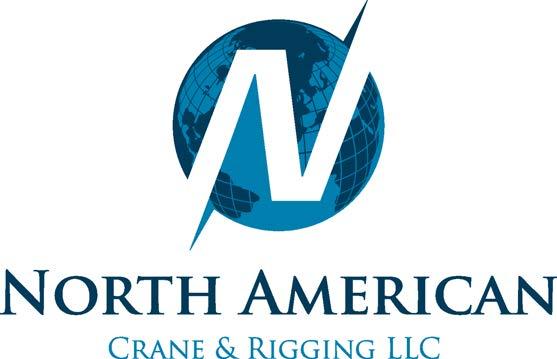

















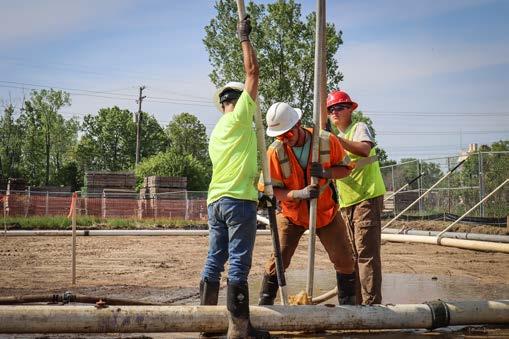











527BROCKTON #(H)(PF) $4,500,000$4,500,000 527BROCKTON #(H)(PF) $2,700,000$2,700,000 526WELLFLEET $6,309,000$6,309,000
525FALL RIVER (PF) $2,955,900$2,955,900
525QUINCY (H)(PF) $5,000,000$5,000,000
426MARSHFIELD 10375Plymouth Ave Pump Station Upgrades $8,117,000$8,117,000
429BARNSTABLE (H)(PF) 7291Sewer Extension and Vacuum Sewer Removal $1,120,000$1,120,000
426NEW BEDFORD (PF) 12508Buttonwood Brook Improvements $4,200,000$4,200,000
426MARSHFIELD 10375Plymouth Ave Pump Station Upgrades $8,117,000$8,117,000
419SHREWSBURY 12483Rolfe & Maple Ave PS Upgrade and FM Replacement$9,820,000$9,820,000
426NEW BEDFORD (PF) 12508Buttonwood Brook Improvements $4,200,000$4,200,000
341PLYMOUTH #(H)(PF) 12462Camelot Drive Sewer Extension Project $12,647,000$12,647,000
340BILLERICA #(H)(PF) 7309Darby and Waterview Avenue Pump Stations $2,760,000$2,760,000
332WAREHAM (PF) 12430WPCF Improvements - Phase 2 $36,450,000$16,000,000
419SHREWSBURY 12483Rolfe & Maple Ave PS Upgrade and FM Replacement$9,820,000$9,820,000 341PLYMOUTH #(H)(PF) 12462Camelot Drive Sewer Extension Project $12,647,000$12,647,000 340BILLERICA #(H)(PF) 7309Darby and Waterview Avenue Pump Stations $2,760,000$2,760,000
329UPPER BLACKSTONE WATER POLLUTION ABATEMENT DISTRICT #(RE)
332WAREHAM (PF) 12430WPCF Improvements - Phase 2 $36,450,000$16,000,000
7324Standby Power for Resiliency $10,000,000$10,000,000
328WELLFLEET
7324Standby Power for Resiliency $10,000,000$10,000,000 328WELLFLEET 12403Wellfleet Enhanced I&A Septic System Program $3,000,000$3,000,000 $877,698,623 Manufacturer and Installer of Bituminous Concrete Products 100 Wales Avenue-Rear Avon, MA 02322 Office: 508-583-2029 Plant: 508-587-6953
$1,171,551,882 GENERAL CONTRACTOR www.tledwards.net JANUARY, 2023 “BUY FROM THE ADVERTISERS IN CONSTRUCTION OUTLOOK” 31
(Average Rating: 502.15)



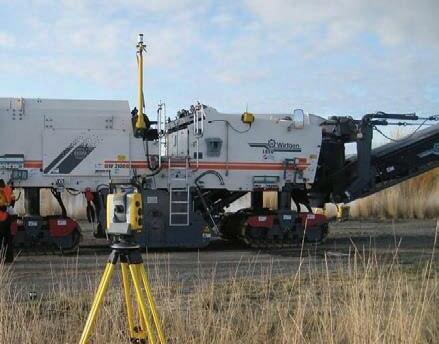


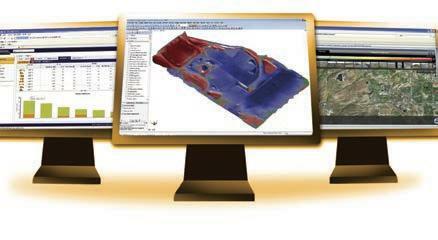



The Massachusetts Department of Environmental Protection (MassDEP) is pleased to present the Draft Calendar Year 2023 Intended Use Plan (IUP), which lists the projects, borrowers, and amounts that are being recommended for financing through the Drinking Water State Revolving Fund (DWSRF) loan program. The DWSRF is a joint federal-state financing program that provides subsidized loans to protect public health by improving water supply infrastructure systems and protect drinking water in the Commonwealth.
Massachusetts is offering approximately $375
million to finance drinking water projects across the Commonwealth. As noted in Table 1, approximately $300 million is being offered to finance 38 new construction projects, and $60 million towards financing nine previously approved multiyear projects. An additional $10 million has been set-aside to finance planning projects and PFAS design projects in calendar year 2023; MassDEP will begin accepting loan applications for planning projects and PFAS design projects, on a rolling basis, as soon as the Final IUP is published. An additional $5 million has been allocated to the emergency set-aside account.






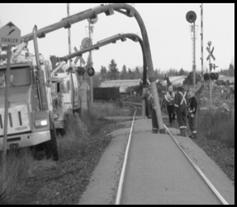






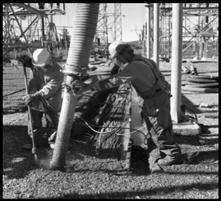

522FRANKLIN (H)
12544Franklin Well 7/7A PFAS Treatment $5,600,000$5,600,000 521BELLINGHAM (PF) 12475PFAS Treatment at Hartford Avenue WTP $20,800,000$15,000,000 520HOPEDALE (PF) 12478Greene Street WTP PFAS Treatment $4,500,000$4,500,000
522FRANKLIN (H) 12544Franklin Well 7/7A PFAS Treatment $5,600,000$5,600,000 521BELLINGHAM (PF) 12475PFAS Treatment at Hartford Avenue WTP $20,800,000$15,000,000 520HOPEDALE (PF) 12478Greene Street WTP PFAS Treatment $4,500,000$4,500,000

NEW PROJECTS $






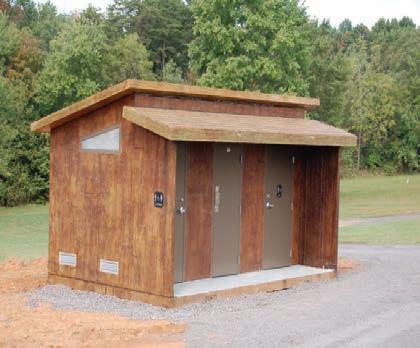

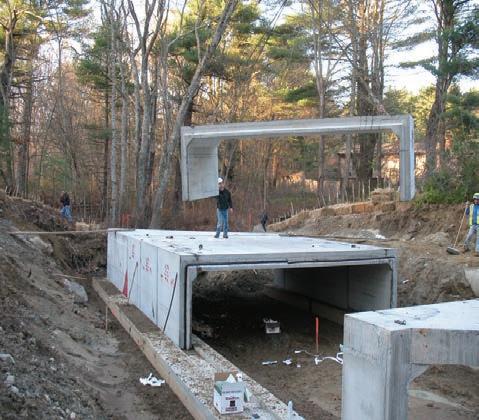










In a December 2022 bid protest decision, the Bid Unit of the Massachusetts Office of the Attorney General (“Bid Unit”) considered whether a public awarding authority violated the proprietary specifications requirements of M.G.L. c. 30, 39M(b), sometimes referred to as the Proprietary Specifications Law. Concluding that a violation occurred, the Bid Unit allowed the protest.
As you are undoubtedly aware, Section 39M “mandates that specifications for construction contracts ‘shall be written to provide for full competition for each item of material to be furnished under the contract.’” This means that for each item of material, the specifications must provide for either: (1) a minimum of three named brands; or (2) a description of material that can be met by a minimum of three manufacturers or producers. The specifications must also provide for an equal of any one of the named brands or described materials.
In doing so, the statute generally disallows “proprietary specifications” that name a single specific item or describe the item in such a way that only one specific product can meet the requirement of the specification. That said, proprietary specifications are permissible in certain limited circumstances where, after reasonable investigation, the awarding authority has determined (in writing) that “sound reasons in the public interest” justify a proprietary specification requirement in connection with a given project.
In this case, the project entailed the installation
of new synthetic turf fields at five sites, as well as related earthwork and improvements. The specifications required “Greenfield USA” turf, “or approved equal.” According to the awarding authority’s engineer, this type of “woven” turf was deemed to be stronger than other types of “tufted” turf materials. The specifications included language that purported to require submission of potential “substitute” turf products “5 days prior to bid date.” Although the awarding authority believed that there were at least four vendors that could provide woven turf products, the awarding authority did not share this
Construction & Public Contracts Group, Hinckley Allen, LLP Christopher



information with bidders prior to bid opening.
Although the Bid Unit did not have jurisdiction to decide what product is or is not an “equal” under the statute, the Bid Unit did have jurisdiction to decide whether the awarding authority complied with the Proprietary Specifications Law. According to the Bid Unit, the awarding authority ran afoul of its statutory obligations in three ways:
1. The awarding authority “failed to identify three distinct products that would meet its specifications.” Apparently, there was unrebutted evidence that of the four vendors that the awarding authority believed could meet the specifications, three of the vendors were related entities and one of them was the “umbrella” company. The Bid Unit stated that “[w]here the products identified by the awarding authority’s expert are provided by a single entity, albeit through related companies, there is no real competition.”
2. The awarding authority “failed to unambiguously identify alternative products pre-bid.” The Bid Unit concluded that the
specifications were ambiguous and could be re-written to “unequivocally clarify the bidder’s right to propose a substitute product . . . .”
3. Lastly, the awarding authority “wrongfully required that substitute products be submitted prior to bid opening.” The Bid Unit made clear that it has “consistently stated that product submittal is to be conducted after contract award and cannot form the basis for rejection of a bid.”
This case underscores the importance of reviewing specifications for compliance with applicable statutory requirements when it comes to compliance with the Proprietary Specifications Law. An awarding authority’s failure to comply with the requirements of the statute could jeopardize a given procurement. Any questions concerning specifically-identified products or materials or acceptable substitutes should be addressed during the pre-bid question and answer stage. n



As a youngster born in Worcester, Massachusetts, Mark Langevin attended David Prouty High School, a small public school located in the neighboring town of Spencer. Mark was a good student, but in the early 80s neither he – nor almost anyone else at that time – knew what a fiber optic cable was. But over the next 20 years there would be an explosion in the use of Fiber Optic technology, as that industry mirrored and followed along with the tremendous growth of home computers and cell phones.
Mark got his first exposure to the telecommunications business while working during summers with a small contractor at US Sprint. Starting as a laborer, he eventually was trained to be an apprentice cable splicer by the time he left school. Although still too young to visualize the big picture of telecommunications, Mark liked the work and he enrolled at Central New
England College to pursue a degree in Electrical Engineering. He continued working summers at Sprint, and when the contractor he was working for left Sprint in 1986 to start his own business, Mark followed him.
His pursuit of a Bachelor’s Degree in Electrical Engineering hit a snag in 1987 when Central New England College closed its doors during Mark’s senior year. At that point Mark took his Associate’s Degree and started working full time providing contract services to major telecommunication providers in New England. It wasn’t long before Mark was running a crew and rapidly advancing within the company. By 1990, he had been exposed to every part of the business and over the next 10 years was managing both the field and the office end of the company operations.

Throughout the 9 0s fiber cable was replacing copper wires as the dominant product for transmitting data, and it was being installed as fast as it could be produced. Peo ple with knowledge of how to install, repair, and configure these new systems were in high demand. In 2000, Mark decided to venture out on his own and formed Phoenix Communications. With a brand-new Ford Econoline van, and a few basic splicing tools, Mark started working out of his garage in Hubbardston, MA. For the next t wo years the fledgling business did mostly small subcontracts with about six employees while Mark was busy banging on doors and introducing his business to major companies like National Grid, AT&T, and Verizon.
Phoenix Communications was offering to provide full-service fiber optic cable solutions on a cost-effective, rapid turnaround basis, headed up by a proven performer with 14 years of hands-on experience. Getting in the door during those early and hectic years of telecommunication growth was not so difficult, but could the company prove itself to be a consistent competitor and performer?
Mark’s timing for starting his new business at first looked to be a major mistake as it ironically coincided with the famous DOTCOM bust of the early 2000s. Between 1995 and 2000 the Nasdaq Index had risen 400% to 5,014 as IPO’s became a popular vehicle for the masses, and investors bet heavily on telecommunications and internet stocks. That period later became known as the DOTCOM Bubble. But the explosion in spending (with borrowed money) far outpaced the early customer demand, and major companies in both sectors soon saw huge net operating losses. The stocks of these companies collapsed between 2000 and 2002 leaving many bankrupt creditors in their wake, including large companies doing the same work as Phoenix but who were overextended. The Nasdaq Index lost 78% of its value bottoming out at 1,114 in October of 2002.
The dramatic fall of these large telecom companies and contractors actually provided an opportunity for small and efficient companies like Phoenix. According to Langevin, Phoenix not only weathered the DOTCOM collapse, but was able to come out of it with a larger workload, and a new list of well financed and stable clients. By 2004, Phoenix had grown to over 25 employees with revenues exceeding $5M. As Mark likes to say, “Unlike the story in mythical legends, this Phoenix was able to rise up – but it did not fall.”
In 2001, Mark Langevin moved his business out of his garage and rented a small contractor’s yard and office in Worcester, MA. Soon his clients were looking for much more than just cable splicing. As Mark recalls, “I



bought our first new bucket truck in 2003 so we could do aerial installations, and within the next year I purchased an excavator to meet our client’s demand for direct buried installations.”


Phoenix continued to grow steadily as the internet and Information Technology revolution rebounded after the DOTCOM crash. The company was becoming well known to the growing number of telecom giants operating in the Massachusetts area. According to Langevin, an early job that really put the name Phoenix on the map was the Longfellow Bridge Fire in May of 2007.
To the average commuter the iconic stone and steel bridge across the Charles River connecting Boston to Cambridge does not appear to be flammable. But when a homeless person sleeping under the bridge lit a small fire to stay warm, it ignited a mass of plastic ductwork and cables hidden below the bridge deck and created an immediate calamity for the local telecom industry. The ducts carried fiber optic cables that supported all the data and internet from every major carrier in the region. Multiple services were interrupted throughout Boston and Cambridge including most of the colleges, the financial district, and even links to Washington and parts of the East Coast. The bridge was closed to traffic, including the MBTA’s red line train, as the fire was put out and the cable damage was assessed.
“We had a contract with one of the national carriers at the time,” says Mark Langevin, “and we were the first ones to respond to the site. It was a compact site and the City wanted to restore vehicular and train traffic the next day so there was barely enough room for our crews to work.” Phoenix brought in multiple crews to work around the clock and they pulled new underground cables below the 1,800 foot long bridge. The national carrier was up and running again within 24-hours. Every other major carrier with cable damage hired Phoenix to repair and replace their cables as well. According to Mark, “We worked there around the clock for a week to get these carriers connected again,” Mark stated with pride. “After that job, everyone in the industry knew about Phoenix. It was better than any ad campaign we could have created.”

After the Longfellow Bridge job, Phoenix experienced steady, but managed growth. The company invested heavily into equipment for both overhead and underground installations. In addition to more blue-collar field workers, Phoenix ramped up the engineering and project management side of the business to expand company capabilities and better serve their clients.
In 2013, Phoenix moved their, by then, 100 employee operation to Shrewsbury. The 4 -acre site with a modern 35,000SF office/warehouse would give the company plenty of room to grow. That same year Massachusetts Governor Duval Patrick made a personal visit to the Phoenix headquarters and congratulated the company for being one of the fastest growing small businesses in the state.
Privately held and family owned businesses often face unique issues and challenges. Hinckley Allen attorneys have been advising such businesses for decades and have accumulated deep expertise.


We understand that the issues faced by a privately held or family owned business often reverberate through the broader family dynamic, and that a clearly defined strategy for running and transitioning the business is essential for both corporate and familial harmony.
Our attorneys can assist with a variety of legal issues: including succession and tax planning issues, employment-related issues, retaining quality outside directors and advisors, and managing exit transactions.
Learn more about our offering at www.hinckleyallen.com
jdoran@hinckleyallen.com
Phoenix Communication, Inc. continued from page 49
Today Phoenix has grown to be the largest fiber optic solutions provider in New England. Their website lists the company as “ Your local fiber optic solutions provider: Construction, engineering & support with the highest safety standards.” The company works throughout New England and New York and has recently opened an office in Virginia.
Their Shrewsbury yard houses a fleet of over 75 work trucks and bucket trucks and their large warehouse provides cover for miles of various cables and thousands of related parts in inventory. The company’s underground division boasts a dozen excavators, trench boxes, road plates, three custom vac trucks, and assorted compressors, pumps, and contractor tools. As this article was being written Phoenix was taking delivery on its fourth state-of-the-art new Vacuum Excavator.

While 160 field employees report for duty at 20-40 jobsites on a daily basis, another 60 engineers, designers, managers, and administrative staff fill the offices every day at 25 Bowditch Drive in Shrewsbury. A 2020 addition to the staff was Meagan Langevin, Mark’s daughter, and a graduate of Bryant College who works as a coordinator for the project management group. “I’m so proud of Meagan the way she is grasping this business,” beams Mark. “She has a real future here, and I’m just hoping she will allow me to play a few more rounds of golf next year,” he says with a wink.
“Timely responses and quality work is mission critical to satisfy our customers, but good employees are the key to successful company growth,” says Langevin. “I work hard at finding the right people. Attitude is as important as talent. We can develop talent. I’m an accessible and visible owner and I’m a big believer in teamwork and company pride.” Langevin encourages ideas from his employees and strives to create an office atmosphere that makes people want to come to work.
The ultimate sports fan, Langevin is an investor in the Worcester Pirates arena football team, is the prime sponsor for a race-car competing on the NASCAR circuit, and he relaxes at work with a virtual golf simulator or a friendly game of cornhole. “At Phoenix Communications we have a lot of sports outings to reward our employees,” says Mark. “ You’ll find Phoenix employees at golf outings or attending almost every type of sporting event in the New England area. These events promote our teamwork concept and they help to develop great camaraderie.”
Phoenix crews still respond to splicing calls but are also tackling much bigger projects these days. According to Langevin the company recently completed several townwide fiber optic installations in Western MA that included nearly 100 miles of aerial installation and con -
nections to hundreds of homes. Another project involved 2,000 feet of excavation and buried cable installation in Boston. One of the largest jobs ever undertaken by the company is currently underway as the firm is replacing 830,000 feet (157 miles) of cable, mostly in city streets through existing conduits, from Hartford to Providence to Boston.
“We perform varying scopes of work for both private and public owners,” says Meagan Langevin.
“But all of our project managers make sure that our clients are informed throughout the work and satisfied upon completion whether it be a $5,000 splice job or a $1M telecom project.”
So as Construction Outlook readers travel throughout New England, they might just see the Phoenix Communications Logo when they look up in the air – at a crew working on overhead wires – or when they look down in a trench – at a crew installing a new duct bank.
Phoenix sponsored race car on NASCAR Circuit

UCANE is proud to count Phoenix Communications as one of our members and we wish them continued success long into the future! n

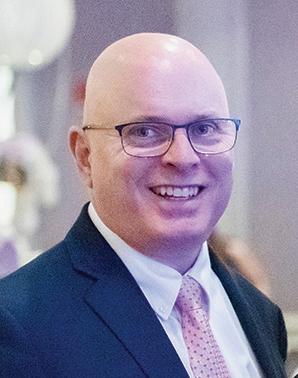
Dedicated manager and advocate for the Commonwealth’s Water Programs, and long-time friend of UCANE, decides to “slow it down a bit” after more than 30 years of Public Service.
At the end of 2022, Steve McCurdy announced his retirement and wrapped up a three-decade career with the Massachusetts Department of Environmental Protection. As Chief Financial Officer of MassDEP for the past four years, Steve and his financial team not only developed and managed the agency’s $50M operating budget, he also worked closely with Administration and Finance (A&F) and other state agencies to implement a variety of financial assistance programs including the State Revolving Loan Fund (SRF), which finances hundreds of millions of dollars in clean water and drinking water construction projects annually.
Prior to McCurdy’s appointment as CFO, he worked for more than 20 years as MassDEP’s Director of Municipal Services. In that position Steve managed MassDEP’s inhouse team of environmental engineers and construction managers, and also worked closely with hundreds of city and town DPW Directors, consulting engineers, and town managers seeking grants and loans for water and sewer projects through various MassDEP programs. Chances are if your municipality has done a public water or sewer
construction project in the last 25 years, Steve McCurdy had a hand in getting it done.
UCANE members and MassDEP have always had a mutual interest in assuring that Massachusetts provided safe drinking water and clean rivers, ponds, and beaches to all its residents. Steve has been an invaluable partner with UCANE over the years. He has been a true professional, always available to take our calls or meet with us to answer questions or concerns from our membership.
At UCANE’s 2019 Banquet, Steve was the recipient of an award from our Board of Directors honoring him for his long and outstanding contributions to the clean water and drinking water industry and for his dedication to public service.
The UCANE Board of Directors and our entire membership congratulates Steve McCurdy on his many achievements during his exemplary career and extend to Steve and his wife Joyce best wishes for a wonderful and well-earned retirement!
As I retire from State service with MassDEP and reflect upon my career, the greatest successes came with my work managing the State Revolving Fund (SRF) program. During the years with the program we helped communities to finance and construct billions of dollars worth of water and wastewater infrastructure in cities and towns all across the Commonwealth. I will be forever proud of that accomplishment. The keys to the successes of the SRF program are the partners in the effort: cities, towns, districts, engineering companies and of course utility contractors. If a project is not built well and correctly, the expected benefits will not arrive. I have seen firsthand that UCANE members build projects well and correctly. Utility work is not for the faint of heart. It is tough dirty work completed in all sorts of weather conditions. It also isn't always recognized for the societal benefits it provides, clean and safe water. So while many people come upon utility construction sites and see only the dirt, noise, and traffic, please know that I see champions of environmental and public health, and I always look for a UCANE member to be working the job. If any member or would be member of the Association wonders if the cost and effort of a membership is worthwhile, let me vouch for the fact that the folks at the office, Anne, Jeff, Mike and the late great Phil Jasset, have been tireless advocates for the industry. They consistently push the legislature to fund the SRF program; push the Administration to finance as many projects as possible; and push the bureaucracy to make utility work as safe as possible without undue red tape. UCANE was a truly a great partner to me during my time at the helm of the SRF program. As I leave MassDEP, I thank UCANE and its members for their tremendous partnership in protecting public health and enhancing our environment in Massachusetts. I wish you all prosperous and safe times ahead.
Sincerely, Steve McCurdy












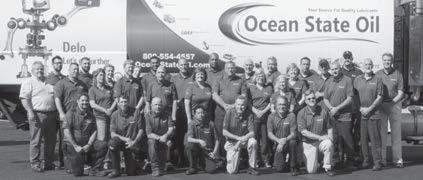

I started my career in Public Works as an intern in my hometown of Needham, while pursuing my undergraduate degree in Political Science. While I had many friends who worked as interns, doing filing work or getting coffee, I was lucky to be given the chance to work on a project, completing a prioritization analysis of Town vehicles for replacement. I continued as an intern in various departments in Needham over the rest of my undergraduate career and became an analyst in the Public Facilities Department when I graduated. I worked in that role for four years, helping shape the Department overseen by a new Director.
As I pursued by Master’s in Public Administration, I was promoted to Supervisor of Administration for the Public Works Department. I was selected for the American Public Works Associations Emerging Leadership program, which brought 16 people from across the country together to work for a year developing leadership skills and creating a presentation for the national Public Works Expo.
I took on an acting role as Director of Public Facilities in conjunction with my supervisor role, and later became the Director of Finance and Administration for Public Services. I participated in the International City Managers
Association Leadership program to continue building my municipal leadership skills.
In the fall of 2020, Needham’s Public Works’ highly respected Director Rick Merson retired after 4 8 years with the D PW and nearly 30 years as Director. The Town began a planned succession process, and I took on the role as Interim Director in October 2020. In March 2021, I was named Director of Public Works.

I have really enjoyed working for my hometown for the past 15 years. I actually grew up about seven houses down the street from the Public Works yard, so you could say I’ve always been around Public Works!

Will you please provide us with some insight into your education, past experience, and history that led you into your current position?
Can you give us a brief description of Needham in regard to the make-up of the DPW, population, and infrastructure statistics?














Needham is a suburb in Metro-West Boston, with an estimated population of 31,000. It occupies a land area of approximately 12.75 square miles. The Town is classified as an economically developed suburb with above average wealth levels and higher education attainment. The Town has an “AAA” credit rating from Standard and Poor’s. It is located on major commuter highways and is accessible to Boston via the commuter rail. The Town is surrounded by the Charles River on three sides.
Our Department of Public Works manages all the infrastructure in the Town. The Department has five operating divisions – Highway; Parks & Forestry; Water, Sewer, & Drains; Building Maintenance (which also maintains the schools); and a full-service Recycling and Transfer Station. We have three support divisions – an in-house - including the Engineering office, Administration and Finance, and Fleet Maintenance. We are the primary first responders in weather events and are respon-
sible for snow removal for the community. Needham DPW maintains a very busy and dedicated staff of 153 employees and has an annual operating budget of approximately $25M. From that budget our department will also service/repair/replace, as needed, our fleet of over 125 vehicles and pieces of construction equipment. Typically, the department will self-perform most smaller projects while at the same time overseeing another $10 million plus of annual Capital Improvement Infrastructure Projects put out to public bid.
Two of the largest concerns we have right now are related to DPW staffing and to the private sector’s capacity to perform work. We strive to be an employer of choice, continued on page 59




Industrial Safety & Rescue is always ready where you need
What do you currently see as the most pressing infrastructure needs for the Town in the next few years, and is there a 5-year Asset Management Plan in place to address those needs?




from page 57
where people in the public works industry desire to work because they know that they will be educated and empowered. We have a succession planning program established to help mentor, educate, and expose staff for new opportunities. The Department is currently undergoing a si gnificant workforce shift as long-term employees retire. Additionally, Federal D OT has imposed new re quirements for Commercial Drivers Licenses that are making it harder to hire and more expensive for the Town to on-board new employees with less experience. Currently, the DPW is down 12 staff, which represents about 8% of our workforce.
Additionally, increased material costs and high workload volumes for our consultants and c ontractors is c ontributing to project delays and cost over-runs. The Town has a comprehensive and historically well-funded five-year c apital plan, but executing work in a timely manner and within budget has been a challenge both from a contractor and Town staffing standpoint.
Our largest infrastructure challenges relate to continuing momentum of scheduled replacement of underground utilities. The high volume of work in the community coupled with a short construction season means there is a lot of work occurring within a relatively small geographic area at one time, leading to increased traffic congestion and general disruption.

The community is also very interested in becoming more climate friendly and building resiliency. This will likely influence infrastructure development in the next few years.
We have been fortunate to have strong support in Town to fund projects in house, although financial demands and service de -
continued on page 60
How has Needham historically funded infrastructure projects?
mands are forcing us to rethink our strategies. We are applying for grant funds whenever appropriate and possible.

The Town has utilized SRF funds in the past for water and sewer infrastructure projects. Additionally, there have been several larger development projects in the community that have provided funds for the Town to reduce inflow and infiltration.

The availability of Federal and State funds for Infrastructure projects is at an all-time high and looks to possibly continue that way for the next five years. Does Needham have some projects coming out to bid in 2023 and beyond that will be utilizing these Federal Infrastructure funds?
Needham has a strong history of financially supporting its own infrastructure improvement needs. The Department does apply for

grant opportunities to supplement use of local funds. We have $6 million committed from ARPA that we hope to put into water, sewer, and drainage work in the next two to four years. The Town has a relatively high average income and few areas that qualify as environmental justice communities, so some funding opportunities through ILJA may not be available to the Town.
There are a few larger projects beyond 2023 that we are seeking funds for, including the rebuilding of a bridge between Needham and Dover, the implementation of a quiet zone for the commuter rail and the related infrastructure, and the construction of a path connecting two communities over an old rail line that is desired to be both electric bus and pedestrian/ bike friendly.
We have our consultants working on these larger projects and on finding available State and Federal funds. Within the DPW we are trying to analyze how much annual infrastructure activity we can support without creating traffic gridlock within the community. n
• Any child or grandchild of a UCANE member OR an employee of a member in good standing.
• The applicant should be a high school senior who will be enrolling full time in an accredited two- or four-year academic institution for the year beginning in September 2023 OR a current full-time college student who has not previously received a UCANE s cholarship.
Twelve $2,000 scholarships will be awarded. Two of the 12 scholarships will be awarded to applicants pursuing a construction related degree. There will be a question on the application to indicate if you believe you are eligible for these scholarships. The other 10 scholarships are open to all other courses of study.
Applications are judged and winners are selected by independent outside educators. Selection will be based on the overall worthiness of the applicant by considering:
1. Scholastic achievement;
2. Interest and effort in preparing for your vocation;
3. Extra-curricular activities at and away from school, including community and religious service;
4. Difficulty of course curriculum and career objectives;
5. Personal recommendations;
6. Thoroughness of the completed application, particularly the essay
E ach application is assigned a number. When completed, page 1 of the application, with the name of the applicant, must be detached and sealed in the accompanying envelope. Please be certain to indicate the UCANE firm where you, your parent, or grandparent is employed when applying. The applicant’s name must not appear on any part of the application or attached transcripts and recommendations. After the winning applications have been selected, the envelopes with those corresponding numbers will be opened to identify the award recipients.
1. A transcript of high school or college grades through the latest period prior to April 14.

2. A letter of recommendation from the principal or faculty advisor/academic advisor.
3. Additional recommendations from people familiar with the applicant’s ability and character, and from responsible members of the community ( optional but recommended).
In the event the applicant receives a full scholarship from the college of his/her choice, or from any organization, civic group, etc., the UCANE Scholarship will be awarded to another applicant. Applicant’s parent/grandparent must work for a company in the New England Region.
Applications must be received in the UCANE office no later than April 14, 2023. If you have any questions concerning the completion of this application please contact:
Utility Contractors’ Association of New England, Inc. 300 Congress Street • Suite 101 • Quincy, MA 02169 Tel: 617.471.9955 • Email: jmahoney@ucane.com
OSHA recently released its annual list of Top 10 OSHA violations for F Y2022.
Once again, for the 12th year in a row, Fall Protection was the most cited offense, ringing up essentially the same number of citations as in 2021. Hazardous Communications had a 24.4% increase in citations over 2021 and moved up to number 2 on the list. Machine Guarding, Powered Industrial Trucks, and Lockout/Tagout violations saw sizable increases, indicating an OSHA emphasis on industrial or manufacturing workplace inspections during 2022.
Overall, the total number of Top 10 citations (22,123) increased by 4.9% from 2021 to 2022 but are substantially below the 31,816 recorded in 2018. Penalties in 2022 once again raised up automatically according to the Consumer Price Index. F Y23 adjustment has not been announced yet but is expected to be about 8%. That would put each OSHA violation in FY23 20% above 2018 levels.
The maximum fine for a single serious violation that is also deemed to be willful or a repeat was $145,027 in FY22. Contractors receiving the largest fines in FY22 are:
1. Plumber/Excavator in Missouri: $796,000
2. Framing Contractor in New Jersey: $793,000
3. Roofing Contractor in Maine: $501,000
Interestingly, there were no fatalities or serious injuries involved with these citations. Multiple repeat and willful violations were ob -
served during inspections at all three sites. OSHA’s budget went from $590M in 2021 to $612M in 2022. The budget request for F Y23 is for $701M, an increase of 14.5%.
According to OSHA Director Doug Parker, the agency hopes to increase Federal OSHA employees from 2300 to 2800 including adding 159 new compliance officers to the current staff of 850.
The Biden Administration, Department of Labor Secretary Marty Walsh, and OSHA Director Parker will continue to strongly promote workplace safety for employees into 2023. Ultimately, contractors can expect that enforcement of OSHA’s safety regulations will be more aggressive and robust going forward.
Since OSHA was established in 1970 it has played the major role in creating a safer working environment across all industries. Worker injuries and illnesses have dropped from 10.9 incidents per 100 workers in 1972 to 2.8 per 100 in the most recent survey done in 2019. During that same period worker deaths in America declined as well, from about 38 worker deaths a day to 14 a day.
In recent years construction has accounted for approximately 9% of all worker injuries but 20% of worker fatalities. The leading cause of workplace fatalities has overwhelmingly been motor vehicle accidents, with roughly 40% of all fatalities occurring in transportation incidents. n
No. 1: Fall Protection (1926.501)



Violations: 5,260 in 2022 • 5,295 in 2021 = –0.7%
No. 2: Hazard Communication (1910.1200)



Violations: 2,424 in 2022 • 1,947 in 2022 = +24.4%
No. 3: Respiratory Protection (1910.134)

Violations: 2,185 in 2022 • 2,527 in 2021 = –13.5%
No. 4: Ladders (1926.1053)

Violations: 2,143 in 2022 • 2,026 in 2021 = +5.8%
No. 5: Scaffolding (1926.451)
Violations: 2,058 in 2022 • 1,948 in 2021 = +5.6%
No. 6: Lockout/Tagout (1910.147)

Violations: 1,977 in 2022 • 1,698 in 2021 = +16.4%
No. 7: Powered Industrial Trucks (1910.178) Violations: 1,749 in 2022 • 1,420 in 2021 = +23.2%


No. 8: Fall Protection Training (1926.503)
Violations: 1,556 in 2022 • 1,666 in 2021 = –6.6%
No. 9: Eye and Face Protection (1926.102)
Violations: 1,401 in 2022 • 1,452 in 2021 = –3.5%
No. 10: Machine Guarding (1910.212)
Violations: 1,370 in 2022 • 1,113 in 2018 = +23.1%
TOTALS: (2022) 22,123 vs. (2021) 21,092 = +4.9%
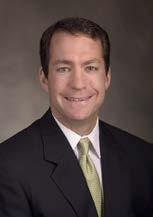
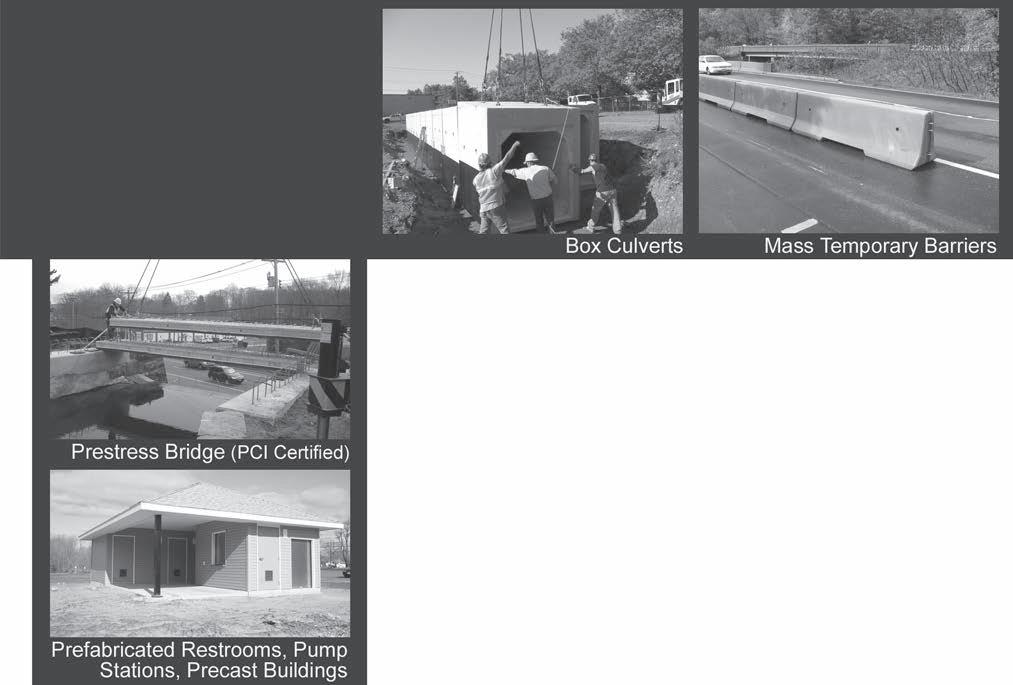




If you are not currently advertising in Construction Outlook, we hope you will consider placing an ad. Our monthly magazine showcases your products and services to contractors and municipal officials who use them. Our Trade Show is a great opportunity to meet with UCANE members and guests face-to-face.





In addition to placing your ad in our magazine, it will also be on our website, and in our monthly e-newsletter. Space is limited, so if you would like to place an ad in our magazine and reserve a booth at our Trade Show, please contact Suzanne Hatch as soon as possible at shatch@ucane.com.
 Trade Show booths offered at NO COST to Construction Outlook Magazine Advertisers.
Trade Show booths offered at NO COST to Construction Outlook Magazine Advertisers.



It’s that time of the year. Winter is settling in and we are bundling up for a long day of working in the cold. Just as there are risks with working in the heat, the cold brings risks that we need to be aware of. Anyone working in a cold environment may be at risk for cold stress. Prolonged exposure to cold and/or freezing temperatures may cause serious health problems such as hypothermia, frostbite, and trench foot. Although OSHA does not have a specific standard that covers working in cold environments, under the OSH Act, employers have a duty to protect workers from recognized hazards that are causing or likely to cause death or serious physical harm in the workplace. The first step in protecting workers is to be able to recognize the hazards of cold stress.
Hypothermia is when the normal body temperature (98.6°F) drops to less than 95°F. Exposure to the cold causes the body to lose heat faster than it can be produced. Hypothermia can occur at temperatures above 40°F if you are chilled from rain, sweat, or cold water. Signs and symptoms usually develop slowly and may include:
• Shivering (this may stop as body temperature drops)
• Slurred speech or mumbling
• Slow, shallow breathing
• Clumsiness or loss of coordination
• Drowsiness, fatigue, or very low energy
• Confusion or memory loss
Hypothermia is an emergency and you should seek medical care immediately. To prevent further heat loss while waiting for medical care to arrive try to move the person to a warmer location, change them into dry clothes, cover them with a blanket, or try to protect them from the cold air and wind.
Frostbite occurs when body tissues freeze and can occur at temperatures above freezing due to wind chill. Frostbite may result in permanent damage or amputation. It typically occurs on exposed skin such as; fingertips, toes, earlobes, cheeks, chin, and
the tip of the nose. The early signs and symptoms of frostbite are patches of reddish skin and burning pain. The condition then progresses to cold, numb, white, or grayish skin that feels stiff or looks waxy. Immediately get out of the cold if you suspect frostbite. Mild frostbite can be treated with first aid by slowly warming the affected area, but don’t rub it since that can damage your skin. If the numbness doesn’t go away, you should seek emergency care.
Trench foot is an injury to the feet that is caused by exposure to wet and cold conditions. Wet feet lose heat at a rate of 25x faster than dry feet. Workers can get trench foot in temperatures as high as 60°F


 Patrick W. Saltmarsh Corporate Safety Director J. Derenzo Companies
Patrick W. Saltmarsh Corporate Safety Director J. Derenzo Companies
if feet are constantly wet. The signs and symptoms of trench foot are tingling, pain, swelling, cramps, numbness, and blisters. If you are experiencing any of those signs and symptoms; remove your wet boots and socks, dry your feet, avoid walking and keep your feet elevated.
Construction work involves working in the cold. Here are some important tips that can be taken to help prevent cold stress:
• Wear proper clothing for the environment
• Take breaks in warm, dry areas
• Avoid exhaustion or fatigue
• Keep extra clothing handy in case clothes get wet
• Drink warm, sweet beverages
• Eat warm, high-calorie foods
It’s almost impossible to avoid the conditions when working in construction, however, if you can work in pairs or at the very least, check on each other, you will be able to recognize the danger signs of cold stress quicker helping to avoid serious harm. n


Manufacturer

Holden Trap Rock Co. 2077 N. Main Street (Route 122 A) Holden, MA 01520 Tel: 508-829-5353 Fax: 508-829-9346
Berlin Stone Co. 332 Sawyer Hill Rd. (off Rt. 62 & 495) Berlin, MA 01503 Tel: 978-838-9999 Fax: 978-838-9916


A world of thanks to the following UCANE members and friends who donated cash or provided items to our auction...and to those who purchased auction items.
SponSored by

aTs EquiPMEnT, inC. alBanEsE BRoTHERs, inC. aMERiCan EquiPMEnT & FaBRiCaTing CoRP. a. anDREassi & son, inC. aqua linE uTiliTY, inC. BaDgER DaYligHTing BalTazaR ConTRaCToRs, inC. BaRlETTa HEaVY DiVision a. R. BElli, inC. Biszko ConTRaCTing CoRP. BluE Hill CounTRY CluB BREnnan ConsulTing BRookMEaDoW CounTRY CluB DEnnis k. BuRkE, inC. C. C. ConsTRuCTion, inC. C.J.P. & sons ConsTRuCTion Co., inC. C&s insuRanCE agEnCY JaY CasHMan, inC. CElCo ConsTRuCTion CoRP. CHaDWiCk-BaRoss n. CiBoTTi, inC. ConCRETE sYsTEMs, inC. CoRE & Main CullEn MuRPHY & Co., P. C. D'allEssanDRo CoRP. DaglE ElECTRiCal ConsTRuCTion CoRP. DalE CaRnEgiE insTiTuTE DaRMoDY, MERlino & Co., llP DaVagian gRillo & sEMPlE llP DEFEliCE CoRPoRaTion Dig iT ConsTRuCTion llC THE DRisColl agEnCY EJ EJ PaVing CoMPanY EasTERn sTaTEs insuRanCE agEnCY, inC./ WoRlD insuRanCE assoCiaTEs, llC EasTPoinT lasERs, llC EquiPMEnT CoRPoRaTion oF aMERiCa (ECa) FED. CoRP. FEEnEY BRoTHERs uTiliTY sERViCEs FERguson WaTERWoRks
THE FouR PoinTs BY sHERaTon HoTEl W. l. FREnCH ExCaVaTing CoRPoRaTion gVC ConsTRuCTion, inC. gza gEoEnViRonManETal, inC. gagliaRDuCCi ConsTRuCTion, inC. gaRRiTY asPHalT REClaiMing, inC. P. gioioso & sons, inC. gREEn EnViRonMEnTal, inC. i. W. HaRDing ConsTRuCTion Co., inC. HilB nEW EnglanD HinCklEY allEn llP HolCiM nER, inC. HuB inTERanTional nEW EnglanD JEsCo k & k ExCaVaTion Co., inC. kJs, llC P. J. kEaTing CoMPanY l & l ConCRETE PRoDuCTs, inC. laWREnCE-lYnCH CoRP lazaRo PaVing CoRP. MiCHaEl lEniHan liDDEll BRoTHERs, inC. loRusso CoRPoRaTion loRusso HEaVY EquiPMEnT, llC s. M. loRusso & sons, inC. MaBBETT & assoCiaTEs, inC MassaCHusETTs REaDY Mix llC MCCouRT ConsTRuCTion CoMPanY MCgill HosE & CouPling, inC. MClaugHlin CHEVRolET MCWanE DuCTilE MERsino DEWaTERing MilTon CaT nsi ConTRaCTing llC naTional WaTER Main ClEaning Co. noRTH aMERiCan CRanE & Rigging llC noRTHsTaR insuRanCE sERViCEs, inC. noRTHWEsTERn MuTual oHs TRaining & ConsulTing, inC. oCEan sTaTE oil
RoBERT B. ouR CoMPanY, inC. R. M. PaCElla, inC. PalMER PaVing CoRP. PaWTuCkET HoT Mix asPHalT PoDguRski CoRP. J. a. PoliTo & sons inC. E. J. PREsCoTT, inC. H. R. PREsCoTT & sons, inC. PuTnaM PiPE a Dana kEPnER CoMPanY RJV ConsTRuCTion CoRP. Rain FoR REnT-nEW EnglanD RaPiD FloW, inC./ VaCuuM ExCaVaTion, inC. RiTCHiE BRos. auCTionEERs RoaDsaFE TRaFFiC sYsTEMs RoDMan FoRD salEs, inC sPs nEW EngalnD, inC. sanDY BuRR CounTRY CluB sCiTuaTE ConCRETE PRoDuCTs CoRP. sCRaP-iT, inC./MiniCHiEllo BRos., inC. sHEa ConCRETE PRoDuCTs, inC. siMPson guMPERTz & HEgER inC. skanska usa CiVil sTaRkWEaTHER & sHEPlEY insuRanCE BRokERagE, inC. sTilEs CoMPanY, inC. TaYloR oil CoMPanY, nEW EnglanD TonRY insuRanCE gRouP, inC. TRaVElERs TRiuMPH MoDulaR inC. TWElVE PoinTs RETiREMEnT aDVisoRs uMBRo & sons ConsTRuCTion CoRP. uniTED ConsTRuCTion & FoREsTRY, llC VaRi-TECH llC WEs ConsTRuCTion CoRP. W. WalsH Co., inC. WEsTon & saMPson EnginEERs R. H. WHiTE ConsTRuCTion Co., inC. C. n. WooD CoMPanY, inC. WooDCo MaCHinERY, inC. R. zoPPo CoRP.






Social inflation refers to the increase in court awards due to factors other than economic inflation such as changing attitudes of jurors due to society trends, views toward increased litigation, broader contract interpretations, and plaintiff friendly legal decisions.
Plaintiff attorneys are much more aggressive than a decade ago. They are investing heavily in strategic marketing, utilizing physiological tactics to elicit emotional response from jurors, and becoming more creative in influencing medical costs associated with injuries. We see more and more judgements based on emotions and increased desensitization to large awards and settlements.

It’s easy to allow your insurance policies to renew every year with only a glance at the premium change, but today more than ever it is time to take a close look at the limits you have for auto liability and the personal or business liability limits you carry. For example, Massachusetts law requires a minimum of $20,000 per person; $ 40,000 per accident for auto bodily injury. These limits can and should be increased as $20,000 will do very little to protect you in the event of an accident.
In 2020 the average personal injury award was $2.6 million; the average business liability award was $3 million for negligence and $7 million from products liability [1]. It is expected these awards will continue
to climb. These factors drive the value of insurance claims and in the event of an unfortunate accident may exceed the limits carried on your insurance policy leaving your personal assets as risk.
The cost to increase liability limits on an insurance policy is a very small investment. An umbrella policy, which is also a small investment, sits atop of your other polices and provides additional protection if a judgement exceeds your policy limit and threatens to consume your personal or business assets. In today’s litigious environment, a thorough review of your current policy with your insurance agent is imperative. Accidents are all around us, and higher insurance limits will protect everything you’ve worked hard for. n
[1] Insurance Information Institute. https://www. iii.org/graph-archive/96044

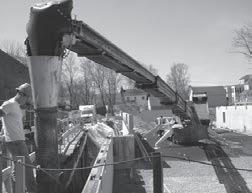




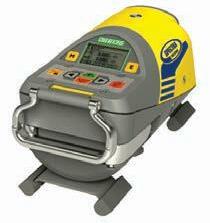




The grants were awarded to communities and water utilities to help pay for improvements to drinking water and wastewater infrastructure.
BARNSTABLE, MA — More than $107.3 million in grants were awarded for 43 municipal water projects in 35 communities across the Commonwealth.
That includes in Barnstable, where t wo projects were approved.
The grant funds are awarded to cities, towns, counties, and water utilities to help pay for improvements to drinking water and wastewater infrastructure.
“These grants will support vital water infrastructure projects throughout the state,” said State Treasurer Deborah B. Goldberg.
“This investment furthers our commitment to ensuring the health and safety of all Massachusetts residents by providing access to clean drinking water in even more communities this coming year.”
“Many communities across the Commonwealth are implementing important water infrastructure projects in a cost-effective manner thanks to a significant infusion of funding through the American Rescue Plan Act (ARPA),” added MassDEP Commissioner Martin Suuberg.
The grant amounts are to be provided as loan forgiveness and are awarded by project category to provide much-needed financial assistance towards high-priority projects.
Among the projects receiving grant money are those dealing with PFAS remediation, small drinking water systems and wastewater projects.
Additionally, communities that qualify as “Disad-
vantaged Communities”, determined by an affordability metric that ranks each community in the Commonwealth, will receive additional loan forgiveness funds to ensure that subsidy is given to the communities that need it most.
Here's what projects were approved in Barnstable: Wastewater Pump Station Improvements Project
According to a description provided by the state, "the purpose of this project is to upgrade three of the Town of Barnstable’s existing wastewater pumping stations to be more resilient, dependable, energy efficient, and cost-efficient. The three proposed projects are consistent with the long-term rehabilitation plan prepared in 2019 for the Town's 27 existing pump stations."
The loan forgiveness total is $298,212.
The Town of B arnstable’s p roject i ncludes c onstruction of approximately 11,000 linear feet of gravity sewer and a new pump station. Once operational, the new infrastructure will handle approximately 1.5 million g allons p er day (MGD) of average dai ly fl ow. This p roject i s t he c ritical e lement toward b uilding an extensive wastewater collection system that will eventually serve more than 7,000 properties during the town’s thirty-year phased Comprehensive Wastewater Management Plan," according to a description.

The loan forgiveness total is $2,152,027.
Written by Montana Samuels. Reprinted from patch.com n
ATS Equipment, Inc. 12
Advantage Drug Testing 17
Alta Construction Equipment New England, LLC Ins. Back Cover
B2W Software 58
Badger Daylighting 38
Benevento Companies 39
Boro Sand & Stone Corp. 58
Brennan Consulting 72
Dennis K. Burke, Inc. 45
C&S Insurance Agency 44
Chadwick-BaRoss 21
Concrete Systems, Inc. 8
Core & Main 4
Cumberland Quarry Corp. 37
Dagle Electrical Construction Corp. 36
Darmody, Merlino & Co., LLP 41
Dedham Recycled Gravel 19
DeSanctis Insurance Agency, Inc. 56
Dig Safe System, Inc. 74
The Driscoll Agency 9
EJ 59
Eastern States Insurance Agency, Inc. 54
Eastpoint Lasers, LLC 74
T. L. Edwards, Inc. 31
Ferguson Waterworks 56
Genalco, Inc. 9
L. Guerini Group, Inc. 74
Henniker Directional Drilling, LLC 72
Hinckley Allen LLP 14 & 50
John Hoadley & Sons, Inc. 66
Ideal Concrete Block 2
Industrial Safety & Rescue 57
JESCO 15
P. J. Keating Company 10
P. A. Landers, Inc. 42
Lawrence-Lynch Corp. 66
Lorusso Corp. 21
Lorusso Heavy Equipment, LLC 24
Mass Broken Stone Company 68
Mersino Dewatering 30
Milton CAT Back Cover
Milton Rents 11
Monroe Tractor 68
National Trench Safety 20
Norfolk Power Equipment, Inc. 58
North American Crane & Rigging LLC ................................. 26
North East Shoring Equipment, LLC .................................... 28
Northwestern Mutual ............................................................. 64
Ocean State Oil ..................................................................... 54
Pawtucket Hot Mix Asphalt ................................................... 27 E. H. Perkins Construction Co., Inc. ..................................... 76
Podgurski Corp. .................................................................... 60
E. J. Prescott, Inc. Ins. Front Cvr.
Putnam Pipe 64
Rain For Rent-New England 6
Read Custom Soils 60
Ritchie Bros. Auctioneers 32
Scituate Concrete Products Corp. 22
Scrap-It, Inc. 13
Shea Concrete Products, Inc. 40
SITECH New England 34
Starkweather & Shepley Ins. Brokerage, Inc. 18
Taylor Oil Company 33
Tenna 29
Tonry Insurance Group, Inc 17
United Concrete Products 64

United Construction & Forestry, LLC 1
Webster Printing & Packaging 66
C. N. Wood Co., Inc. 16
Woodco Machinery, Inc. 52
JCB HYDRADIG 110W. The first wheeled excavator and tool carrier designed for purpose and without compromise. JCB is the first to move the engine, tanks and ancillaries to the chassis, making the JCB Hydradig 110W first for visibility, stability, maneuverability, mobility and serviceability.
At the heart of the Hydradig 110W is JCB innovation; its features and their benefits will transform the way you and the whole industry works. BECAUSE UPTIME MATTERS – ALWAYS.


